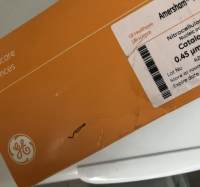Applications of Tissue Microdissection in Molecular Pathology: Principles and Guidelines
互联网
444
The study of human disease processes is an evolving field that is closely Intertwined with the development of technology. The advent of the polymerase cham reaction (PCR) allows investigators new opportunities for genetic analysis of pathological processes DNA and RNA analysis of small numbers of cells is now possible, allowing for study of specific defined cell populations or lesions. For example, application of tissue microdrssection and PCR technology to human tumor samples represents a powerful method to study genetic alterations in cancer cells as they exist in vivo. The study of human tumor samples is complex, and can in fact be hampered by the exquisite sensitivity of PCR. A typical histologic field of cancer contains inflammatory, stromal, premalignant, and normal epithehal cells in addition to invasive tumor cells. PCR amplification of DNA or RNA from these “contaminating cells” interferes with accurate determination of tumor-specific genetic changes. Tissue microdissection provides a method to procure specific cell types from a human tumor sample, e.g., a pure population of tumor cells can be analyzed without interference from neighboring nontumor cells. Additionally, investrgators can recover select subpopulations of cells such as premalignant lesions that cannot be studied in bulk tissue specimens. Our laboratory and others have developed and applied various microdissection approaches to human tissue samples. The focus of the current chapter is to review a detailed protocol of the technique which our laboratory has employed. Specific applications of the technique applied to basic research studies as well as applied surgical pathology studies are described. The chapter finishes with a section on a new laser capture microdissection system developed at the National Cancer Institute (NCI).









